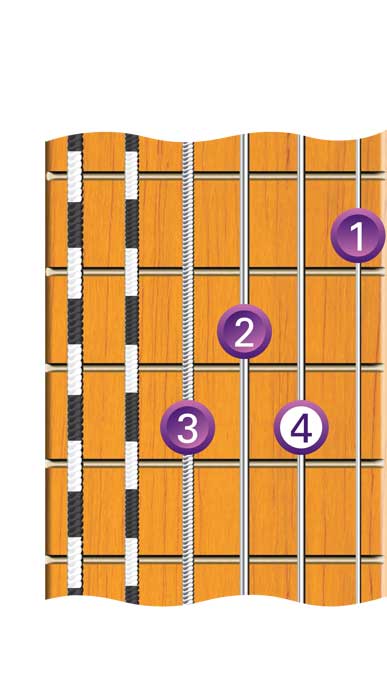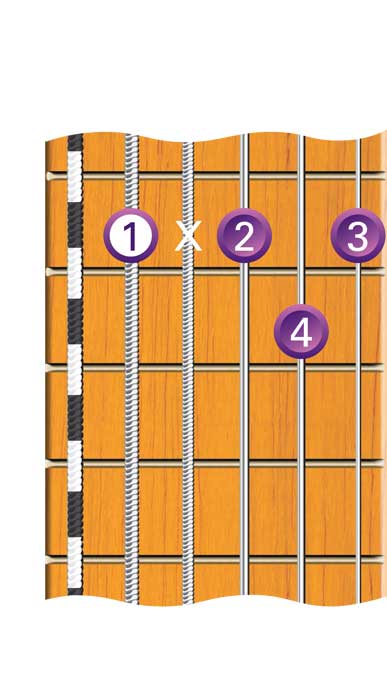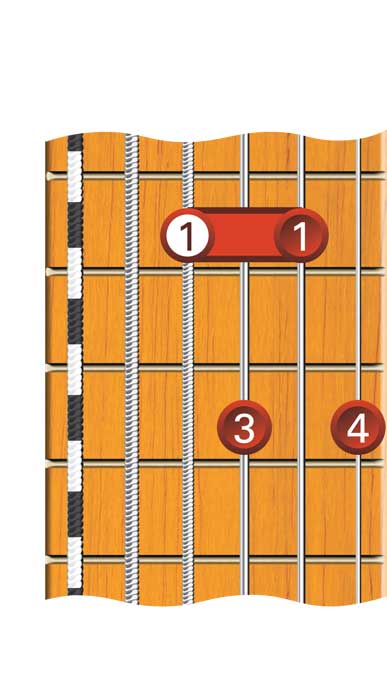
Jazz Chords – First Position
Shown below are a selection of Jazz chord shapes which are played mainly on the first three strings. When fingerpicking these chord shapes the right hand will be in the first position.
Major
(Root Four)

Major
(Root Two)

Major
(Root Three)

Minor
(Root Four)

Minor
(Root Four)

Minor
(Root Two)

Seventh
(Root Four)

Seventh
(Root One)

Seventh
(Root Three)

Maj. Seventh
(Root Four)

Maj. Seventh
(Root Four)

Maj. Seventh
(Root Three)

Min. Seventh
(Root One)

Min. Seventh
(Root Five)

Min. Seventh
(Root Four)

Major Sixth
(Root Three)

Major Sixth
(Root Four)

Major Sixth
(Root One)

The right hand 1st finger (i) is allocated to the 3rd string. The 2nd finger (m) is allocated to the 2nd string and the 3rd finger (a) is allocated to the 1st string.
The following example makes use of many of the above chord shapes. This chord progression is also in ^ time, a total of three beats per bar. A combination of the bass chord style and the arpeggio style is used. Once you are familiar with the progression, experiment by playing the same chords but using a different root position. A good Jazz fingerpicker needs to know as many different chord positions as possible.





